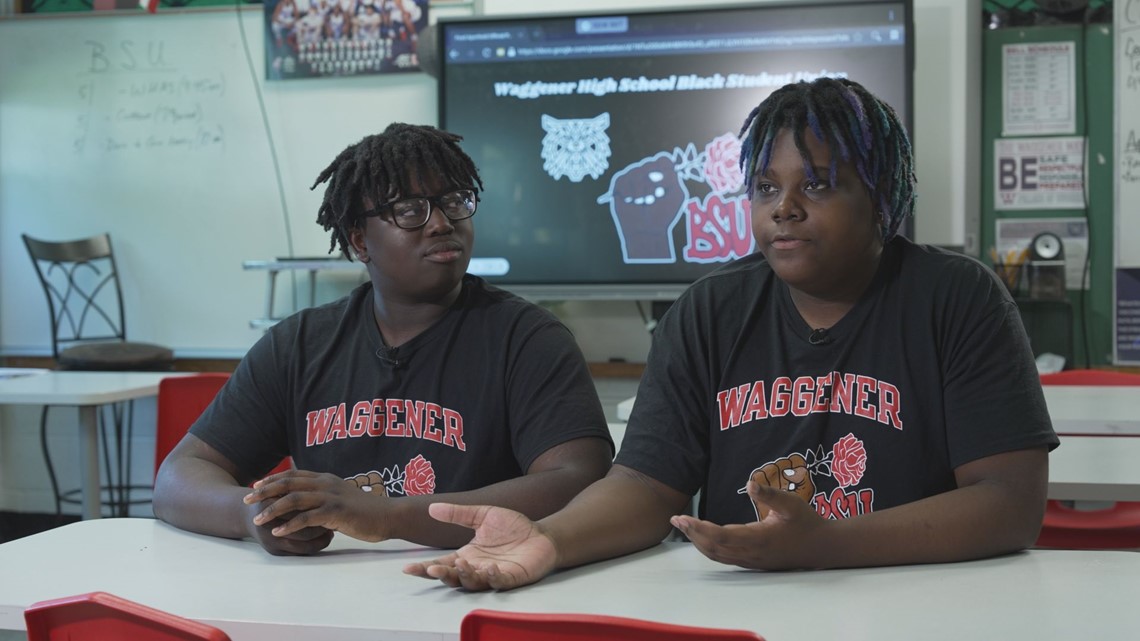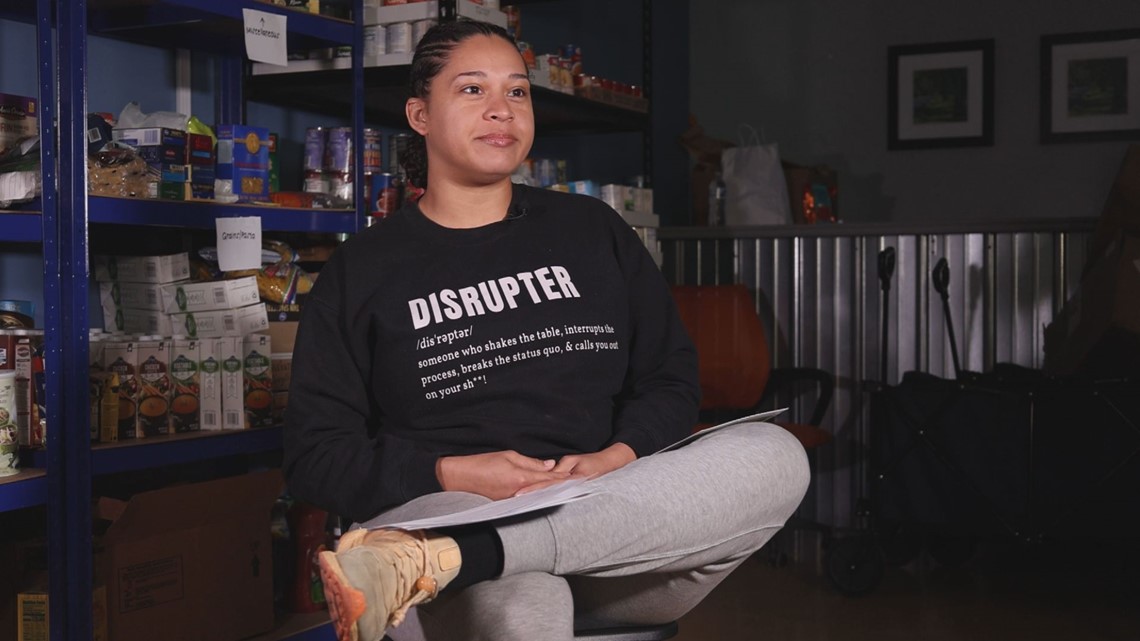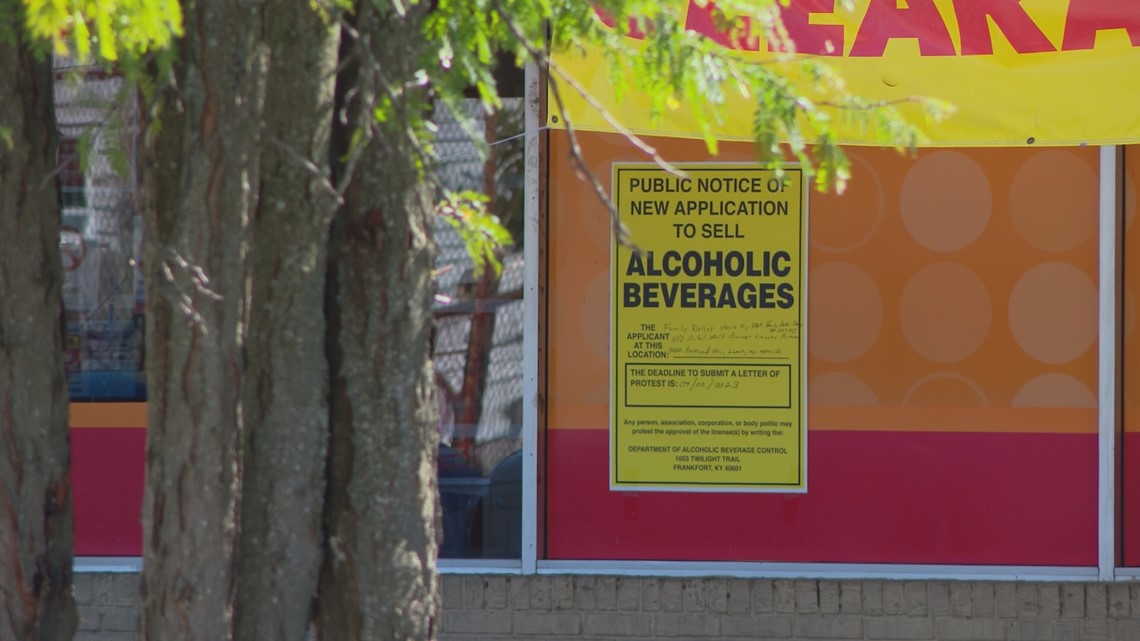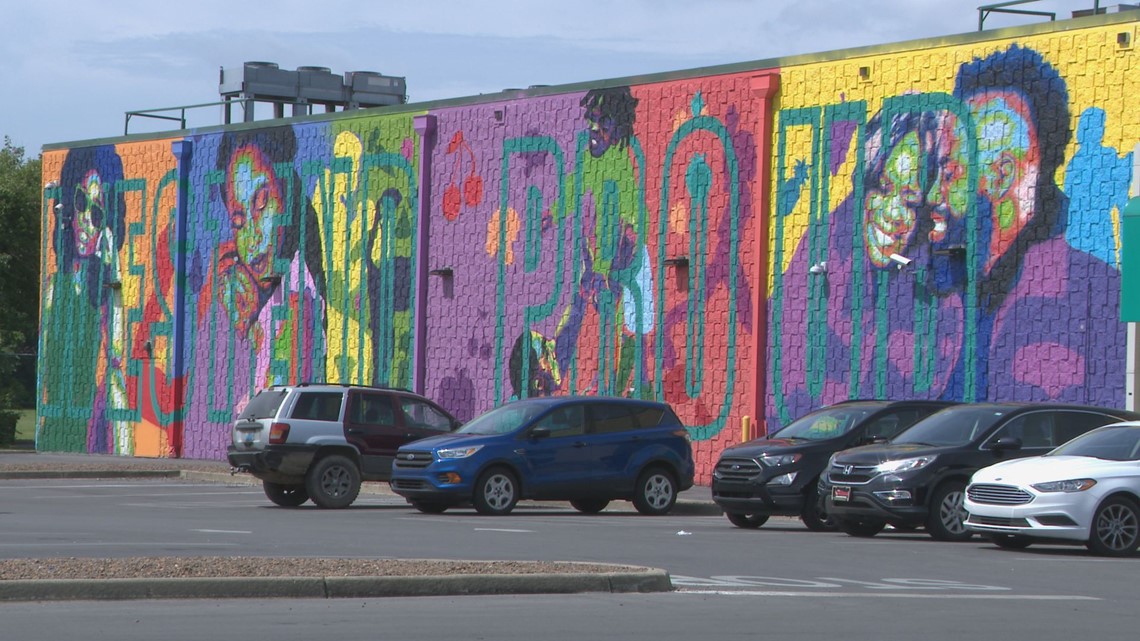'It’s a huge issue.' | The link between food insecurity and violent crime in Louisville
“If I were to take a heat map and place all the violent crimes in our city and cross overlay that with all the areas of food insecurity, it would be the same."

Right now, approximately 80,000 people in Louisville don’t have reliable access to fresh, healthy food.
One in six children and one in nine adults in Kentucky experience food insecurity, lacking access to sufficient food to meet their basic needs, according to Dare to Care.
Numerous organizations across Kentuckiana are actively working to tackle barriers that contribute to food deserts including affordability and limited transportation.
But the impacts of food insecurity ripple throughout our community in ways that go far beyond hunger.
Vincent James, president and CEO of the Dare to Care Food Bank in Louisville, believes there’s a link between food insecurity and violent crime. He’s flagging food insecurity as an issue at the core of the city’s rising rates of violent crime.
“If I were to take a heat map and place all the violent crimes in our city and cross overlay that with all the areas of food insecurity, it would be the same,” James said.
WATCH THE FULL SPECIAL:
Identifying the problem 'We don't talk about it.'
The correlation between food insecurity and violent crime is widely researched nationally and around the world. Research shows for every one percent rise in food insecurity, violent crimes increase 12%.
As of June 2023, there were 219 fatal shootings across Louisville. Compare that to the same time last year when the city saw 203; that’s a 8% increase.
Food insecurity is particularly problematic in west Louisville, which sits in a food desert.
The median income in west Louisville is $22,000 a year and access to transportation is limited. These communities often suffer the brunt of the city’s violent crime.
You can find several major grocery stores in East Louisville, many of which are widely considered to be staples of healthy and proper nutrition. On the opposite side of town in West Louisville, there’s only two full-size grocery stores for a population of more than 60,000 people.
“When we think about the U.S. as a whole, 11% of our neighbors are experiencing food insecurity. It’s a huge issue,” James said. “Yet, we don’t talk about it a lot.”
While identifying the problem is easy, identifying and executing solutions is much more demanding.
But the reality is, no solution can be found without a widespread understanding of how redlining in Jefferson County negatively impacted west Louisville.
Redlining in Louisville A problem decades in the making
Redlining refers to the systemic denying of various services to specific neighborhoods, often based on race or ethnicity, primarily in urban communities.
The real-world application of redlining were national policies that guaranteed federally backed loans to white people and legally refused loans to Black people and anyone else who chose to live or do business in Black neighborhoods.
This made it nearly impossible for appraisers in the private sector to do business in Black neighborhoods because all the residents were considered “bad credit risks.”
The effects and impacts of this are still visible today in Louisville as there is continued demand for more home ownership and business development west of Ninth Street.
In particular, the lack of major retailers and big box grocery stores are a driving factor in west Louisville being known as a food desert. That, coupled with a lack of good paying jobs and a lack of transportation has left many people who are food insecure.
Today, emerging evidence shows people living in historically redlined areas are subject to increased rates of gun violence.
In a Louisville-focused study conducted in 2020, researchers found Louisville neighborhoods that were redlined in the late-1930s experience five times the amount of gun violence than neighborhoods that weren’t.
James said where there’s a prevalence of food insecurity, there’s going to be more violent crime.
“If you think about a violence prevention strategy, providing food is a violence prevention strategy,” he added. “Because if I don’t have food, I’m gonna figure out how to get it one way or another. And most likely, if I don’t have a lot of means, I’m going to do what I see other people do. And if I’m in a community where I see crime as an opportunity to be able to provide for my family, that’s what I’m gonna choose.”
Students leading change 'You have no choice.'
In 2023, there has been a noticeable increase in the number of young people not only becoming victims of violent crimes, but also being charged with violent crimes.
According to James, there is a “clear-cut relationship” between food insecurity and young people committing violent crimes.
“We have to listen to what our neighbors are saying who are in need,” he said. “Then we can build a system based around the information we’re getting from our neighbors. We have to do that, if we don’t do it, we’re going to continue to see the same cycles of things we’re seeing in our community now.”


It’s something students in Waggener High School’s Black Student Union have been focused on.
“Our school is home to a lot of kids from west Louisville,” sophomore Dakota Houghton said. “We’re at a school where many are living in a food apartheid – if nobody else is doing anything to fix it, we should be doing it.”
Senior La’Bryce Byrnes said he has many friends in west Louisville who always say they can’t go to the grocery store because “it’s so far away.”
What started as a research project for a Kentucky Derby Festival event has since become a catalyst for change.
The project went beyond researching how food insecurity has impacted Louisville, as they worked to address the problem through food drives. The students have also taken their research to various conferences and universities.


“There are a lot of fast-food options in the West End,” sophomore Andrew Hill said. “You can get Taco Bell, McDonald’s or Wendy’s, but you can’t go to Whole Foods or Kroger to get fresh food, so you have no choice but to get processed food or fast food.”
Sophomore Jeremy Doe said “it’s just all about the research” and listening to the impacted communities.
“It takes time,” he said. “The more you know, the more it opens your eyes about it.”
Eyes wide open No more sugarcoating
Taylor Ryan is the founder and executive director of Change Today, Change Tomorrow. It’s a local nonprofit that’s fighting for food justice and public health in west Louisville.
Ryan makes no effort to sugarcoat the problem.
“It is atrocious, it is disgusting, like to me, it’s a slap in the face to know that there are constantly grocery stores popping up in the East End,” she said. “I have more dollar stores in the neighborhood and Mom and Pop hot food areas with hot chips than I do actual fresh food options.”


She said it’s difficult for people to place themselves in the shoes of someone without when they’ve had for so long.
“When you have never had a moment -- even when you were in college and you thought you were struggling -- like you’ve never had a moment that was the same as ‘how am I going to feed my kids? How am I going to pay this bill? And how am I going to get to work?’”
It’s called desperation, Ryan said.
“That is scarcity, I like to call it navigating scarcity,” she said. “Because we don’t have a lot and what Black people, and poor people, do is, we’re very resourceful and that can mean leaning on other people or that could mean taking what you need.”
Some may find it difficult to accept the word “scarcity” because options do exist in these communities. However, it’s the resources available in stores that’s causing concern, not just among those living in food deserts, but also those who lead them.
“It is not of their conscience, but of their financial interest,” District 5 Metro Councilwoman Donna Purvis said. She represents the Chickasaw, Shawnee, Portland and Russell neighborhoods.
In her district, there are 13 franchise Family Dollar stores. As of August 2023, all have applied for liquor licenses.
“They target poor areas to come in,” she said. “The prey on communities that are weak.”
Jackie Flood, a well-known community leader in the Russell neighborhood, said there are nearly two dozen liquor stores in her neighborhood, all of which are within blocks of Family Dollar stores.
“The West End needs stores with healthy food,” Flood said. “If Family Dollar wants to partner with us on that, we are ready to talk.”


In a statement, Family Dollar said while it does not sell liquor, some stores do offer name brand beer and wine, similar to brands found at grocery retailers.
While it’s true major grocery retailers do sell alcohol, they also offer ample amounts of fresh produce and non-processed, healthy foods. Most of those foods aren’t nearby.
“There’s a transportation issue in the West End. Not a lot of people have cars,” Ryan said. “If you don’t have transportation, if you don’t have access to the TARC, you can only get what you can carry in your hands, which means you have to take multiple trips, which could take multiple hours. We don’t have that time because we are already poor, and we are already working real hard.”
What's the city doing? Long term solutions for an immediate need
In his first budget as mayor, Craig Greenberg suggested a $6 million subsidy fund for grocery stores in downtown Louisville and other parts of the city that lack access to them.
“When people are hungry, they're desperate, they might make decisions that are not good for themselves or for others around them,” Greenberg told WHAS11’s Eric King. “Having access to affordable, fresh groceries in your neighborhood, that's something that so many Louisvillians take for granted. And those who don't have that opportunity are being left behind.”
Even with money designed to bring in more grocery stores, Greenberg admits, it’s still no easy task.
He says national retailers have been closing stores in Louisville and other cities across the U.S. in a worrisome trend.
“We need, ultimately, the market to take over and grocery stores to identify locations and lower income communities in food insecure neighborhoods without the support of a city government,” the mayor said. “But right now, they're not doing it. So, we have to step in to help to provide an incentive.”
But money is only part of the solution and even with it as an incentive, it doesn’t offer an immediate fix. In fact, the grocery fund was ultimately cut from the finalized budget in a mutual decision between Greenberg and Metro Council. City officials are now looking for other solutions.
Soliciting and building new businesses is a long-term effort, perhaps an effort to right the wrongs of history, however food insecurity is a problem right now.
According to a 2021 report from the Greater Louisville Project, Louisville ranks 6th among its peer cities in food insecurity with 12.9% of residents experiencing it. That’s roughly 80,000 people.
Louisville also ranks 9th when it comes to children who live in a household experiencing food insecurity with a rate of 18.1%.
At the same time, the city is seeing increased levels of violent crime.


Both Ryan and James agree, something must be done today – and that has to include work from everyone across the Metro, not just those personally affected.
“I don’t see people that don’t look like me talking about and leading efforts to try and change this outside of some national organizations,” James said. “When I think about this locally, I don’t see it.”
Taylor’s motto is “providing is prevention,” and believes organization may be a roadmap for immediate change.
Change Today, Change Tomorrow receives surplus food from Trader Joes, a total of about $400,000 worth of food per year. The nonprofit reroutes that food to those who are food insecure.
Ryan said it’s something other big retailers could – and should – do.
“I have resourceful solutions that are immediate, I also have long term,” she said. “Yes, we need to identify the policies we need to change and change them. That’s going to take 10 years.”


So, what can you do right now to help?
“If you are the manager at Kroger, call your local food justice organization and reroute your surplus,” Ryan said. “There are many solutions, I’m not like the end all be all here, but I think eliminating our food waste is a very good start.”
Over the past year, Dare to Care has helped provide more than 21 million meals to those in need. Still, James is quick to acknowledge, it’s not enough to meet the community’s needs, which are growing faster than the efforts to find solutions.
“There has to be a point in time when the world says, our community says, our country says, enough is enough,” he said. “You know that, that we can no longer continue to repeat the cycles that we’re continuing to see.”
Make it easy to keep up-to-date with more stories like this. Download the WHAS11 News app now. For Apple or Android users.
Have a news tip? Email assign@whas11.com, visit our Facebook page or Twitter feed.


